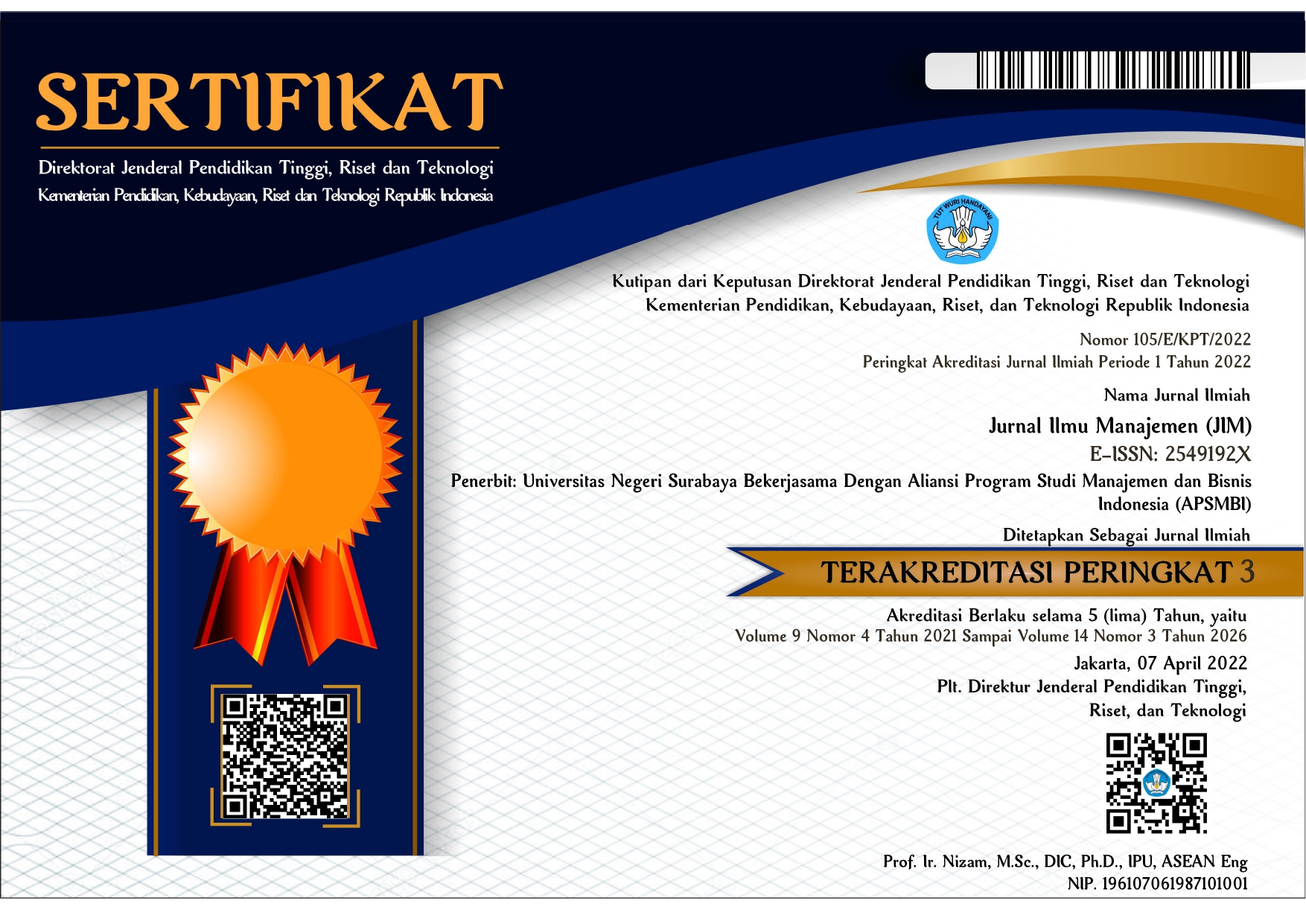Pengaruh rasio-rasio keuangan terhadap financial distress pada perusahaan sektor infrastruktur, utilitas, dan transportasi dengan profitabilitas dan ukuran perusahaan sebagai variabel moderasi
DOI:
https://doi.org/10.26740/jim.v11n2.p306-322Keywords:
company profits, financial difficulties, financial distress, financial ratios, firm sizeAbstract
Financial distress is a decline in financial condition before bankruptcy. This financial distress did not happen suddenly. However, one indication that causes financial distress is the continuous decline in company profits. This study aims to examine the effect of financial ratios on financial distress. The independent variables of financial ratios used in this study are the current ratio, debt-to-assets ratio, debt-to-equity ratio, total assets turnover and net income to total assets. Moderating variables used in this study are profitability and firm size. The period used in this study is from 2019 to 2022. The population used in this study includes companies engaged in infrastructure, utilities, and transportation. The sample used is purposive sampling to produce as many as 20 companies as samples. The analysis used in this research is path analysis. The results showed that the independent variables debt-to-assets ratio, debt-to-equity ratio, and net income to total assets significantly affect financial distress. Profitability moderates the current ratio, and the debt-to-assets ratio significantly affects financial distress. Therefore, companies in this sector are not allowed to have a percentage of debt to total assets and a debt-to-equity ratio that is too high because it will cause the company to bear too much risk due to having to pay the debt guaranteed by assets and equity. Companies can increase their net income to total assets to increase their sales value.
References
Azka, R. M. (2020). Realisasi Investasi Transportasi Terbesar, Ini Alasannya. Retrieved December 22, 2022, from bisnis.com website: https://ekonomi.bisnis.com/read/20200129/98/1195153/realisasi-investasi-transportasi-terbesar-ini-alasannya
Bank Indonesia. (2021). Laporan Perekonomian Indonesia Tahun 2021. Retrieved September 22, 2022, from Bank Indonesia website: https://www.bi.go.id/id/publikasi/laporan/Pages/LPI_2021.aspx
Kasmir. (2019). Analisis laporan keuangan (Rev. 2019). Depok: RajaGrafindo Persada.
Kusnandar, V. B. (2022). Sektor Industri Jadi Penopang Terbesar Ekonomi RI Kuartal II 2022. Retrieved December 22, 2022, from katadata.co.id website: https://databoks.katadata.co.id/datapublish/2022/08/05/sektor-industri-jadi-penopang-terbesar-ekonomi-ri-kuartal-ii-2022
Rukmana, P. (2022). No BPS: Ekonomi Indonesia Triwulan IV 2021 Tumbuh 5,02 Persen YoY. Retrieved September 30, 2022, from suarakarya.id website: https://www.suarakarya.id/ekonomi/pr-2602620461/bps-ekonomi-indonesia-triwulan-iv-2021-tumbuh-502-persen
Downloads
Published
How to Cite
Issue
Section
License

This work is licensed under a Creative Commons Attribution-NonCommercial 4.0 International License.
 Abstract views: 3691
,
Abstract views: 3691
, PDF Downloads: 2984
PDF Downloads: 2984










